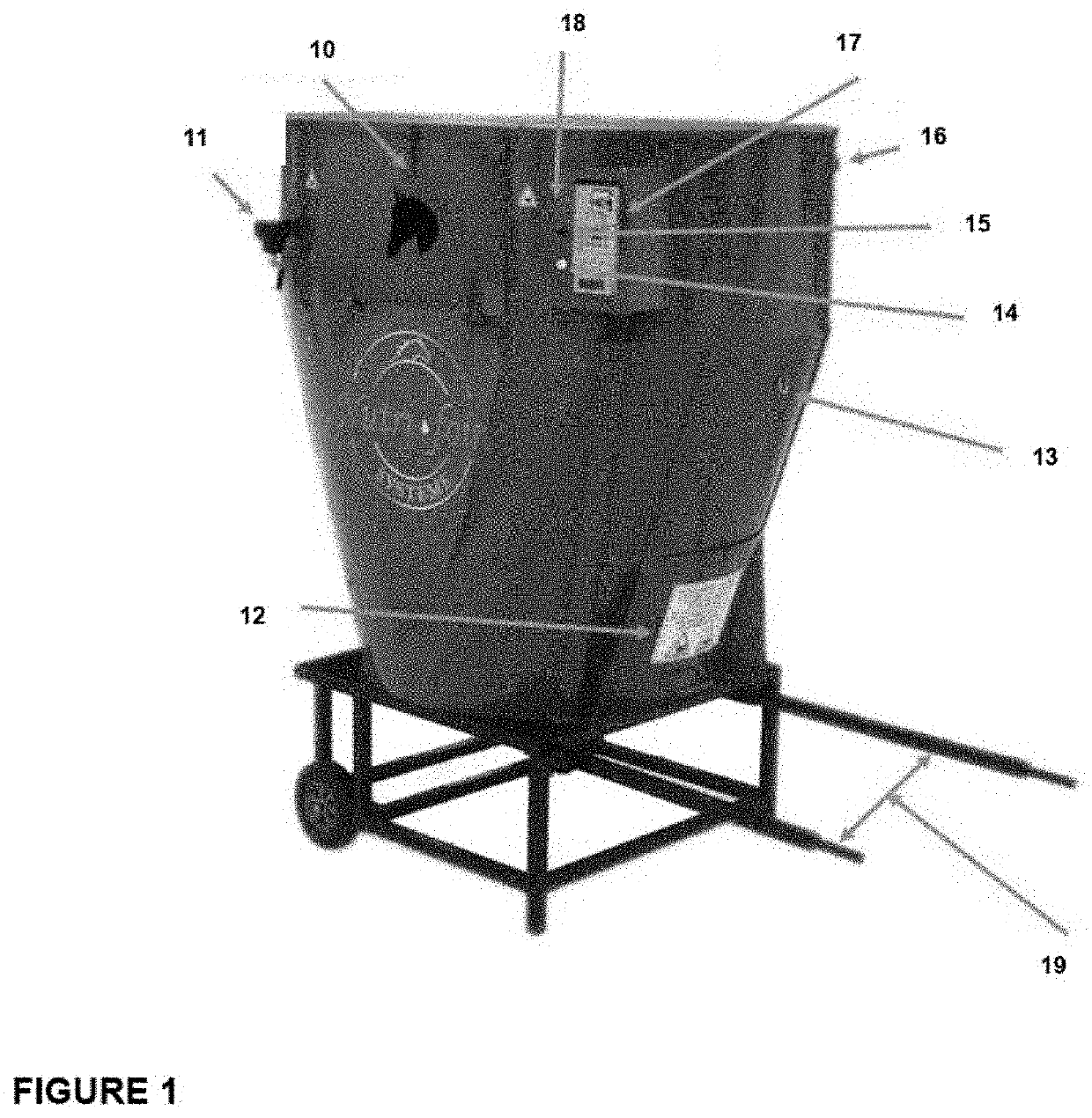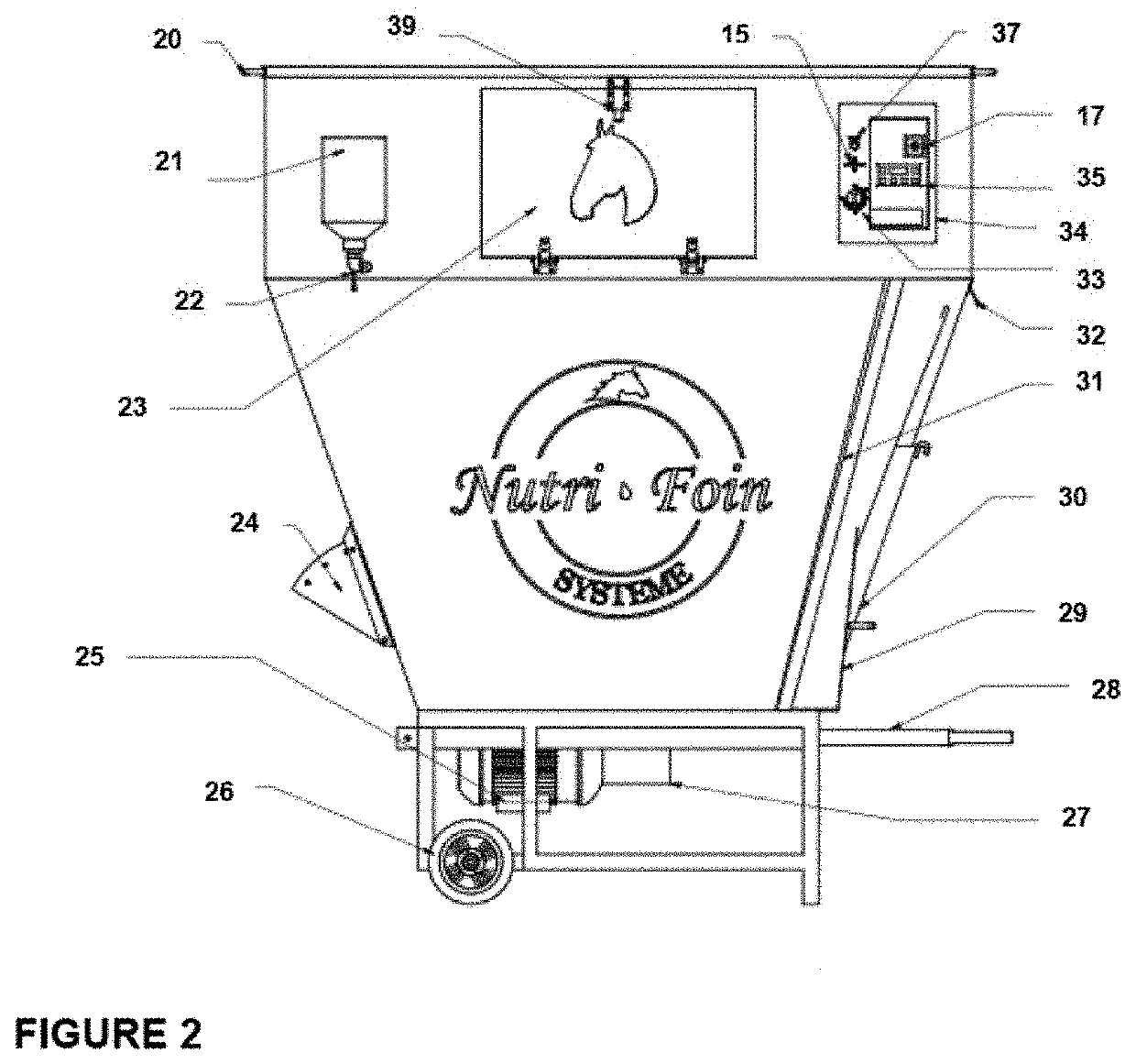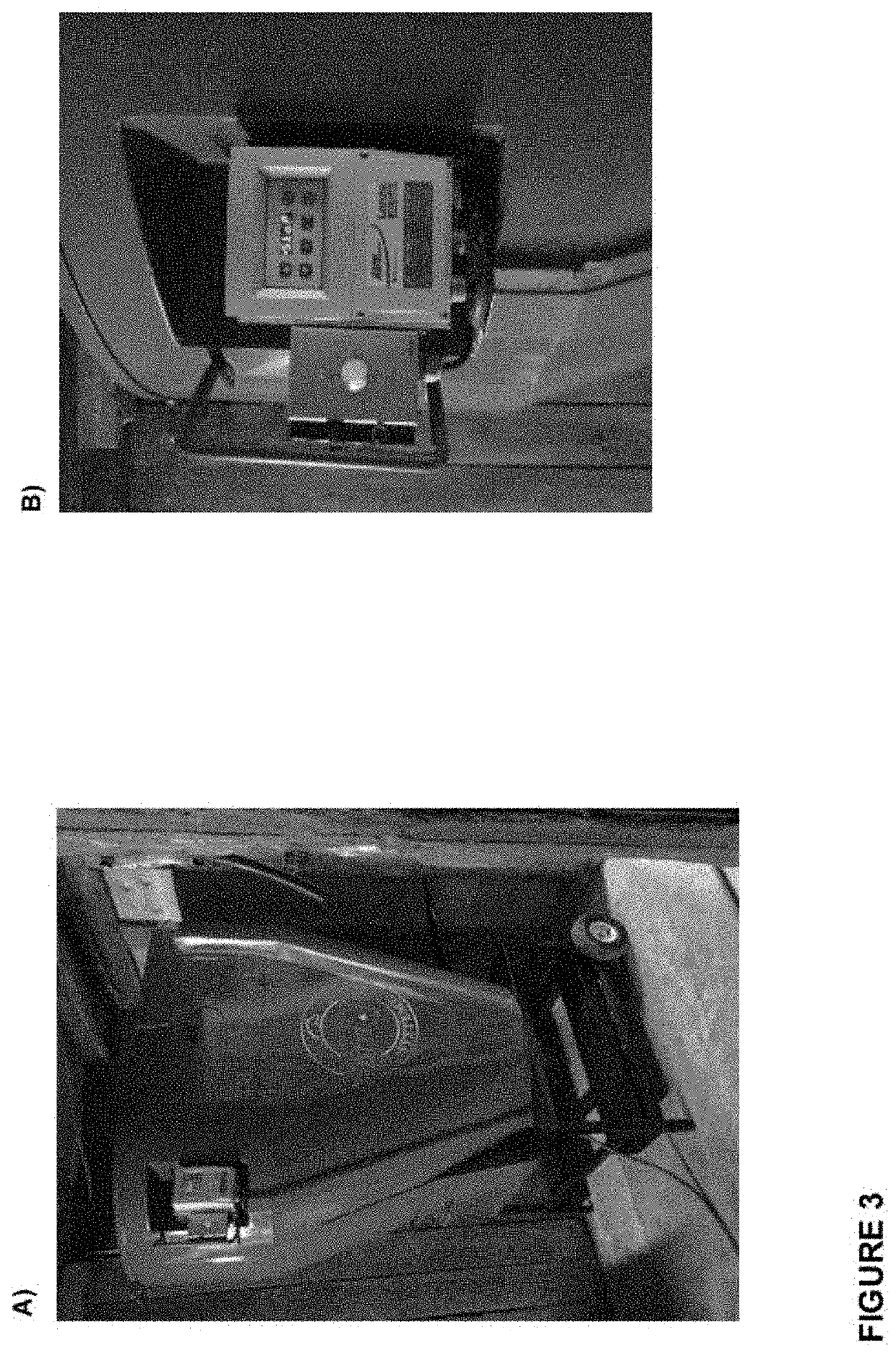Hay-based material free of respirable dust emission: process for its preparation, use and associated machine
a technology of respirable dust and hay, which is applied in the field of hay-based materials, can solve the problems of prohibitive cost of drug administration currently indicated for seawater treatment, premature retirement or euthanasia, and prohibitive cost of associated costs, and achieve the effect of improving the general health of the patien
- Summary
- Abstract
- Description
- Claims
- Application Information
AI Technical Summary
Benefits of technology
Problems solved by technology
Method used
Image
Examples
example 1
ssing Machine
[0051]FIG. 1 is a photograph of the machine according to the invention (“Nutri Foin Systeme”). External components of the machine are outlined including: an entry door (10), a dispenser (11), an exit door (12), a latch (13), a timer (14) a directional switch (15), a negative pressure port (16) which may or may be present or absent, a main power switch (17) with lock, an evacuation button (18) and a lever arm (19). Other components of the machine according to the invention are outlined in FIG. 2. These include: a removable lid (20), a bottle for holding a liquid (21), a flow control valve (22), a side door (23), an adjustable diffusion plate (24), a motor (25), a wheel (26), a transfer box (27), a retractable handle (28), an outlet deflector (29), a sliding door (30), a wiring protector (31), a sliding door fastener (32), a timer (33), a housing (34), a controller (35), a main power switch (17), a hay evacuation (37), a directional switch (15) and a door lock (39).
[0052]...
example 2
ng or Dust-Trapping Agent
[0054]In embodiments of the invention, a soybean-based oil is used as binding agent or dust-trapping agent. This is due to its desirable, naturally-occurring antioxidant properties, in combination with it being highly palatable to horses. Such soybean-based oil has the make-up described in Table I below.
[0055]However as will be understood by a skilled person, any suitable binding agent or dust-trapping agent may be used which is consumable by a horse; and preferably, which is palatable to the horse. Such binding agents or dust-trapping agents may be organic substances or chemical substances. Organic substances include but are not limited to: 1) plant-based oils such as soybean, vegetable, corn, canola, peanut, colza, castor, linseed, olive, avocado, grape, almond, wheat germ, coconut, cottonseed, palm, rapeseed, sesame, and sunflower, 2) fatty acids and animal-based oils such as hydrogenated oils, and fish oils, 3) molasses, and 4) natural gums. Chemical sub...
example 3
on of the Nutrients Mix
[0056]In embodiments of the inventions, the suggested nutrients mix primarily comprises selenium. The nutrients mix used in the invention may also comprise any commercially available product offering a grouping of essential minerals, such as salt, iron sulfate, copper sulfate, zinc sulfate, magnesium oxide, mineral oil, and sodium selenite. A nutrients mix may be adapted to suit the particular circumstances dictated by the health condition of a horse.
PUM
 Login to View More
Login to View More Abstract
Description
Claims
Application Information
 Login to View More
Login to View More - R&D
- Intellectual Property
- Life Sciences
- Materials
- Tech Scout
- Unparalleled Data Quality
- Higher Quality Content
- 60% Fewer Hallucinations
Browse by: Latest US Patents, China's latest patents, Technical Efficacy Thesaurus, Application Domain, Technology Topic, Popular Technical Reports.
© 2025 PatSnap. All rights reserved.Legal|Privacy policy|Modern Slavery Act Transparency Statement|Sitemap|About US| Contact US: help@patsnap.com



